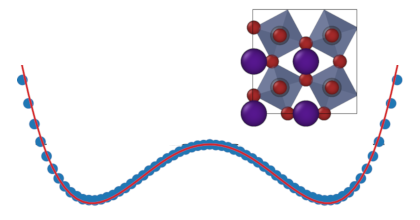Untangling the Raman spectrum of cubic and tetragonal BaZrO3
P. Rosander,
E. Fransson,
N. Österbacka,
P. Erhart,
and
G. Wahnström
arXiv:2409.16161
doi: 10.48550/arXiv.2409.16161
Download PDF

Raman spectroscopy is a widely used experimental technique to study the vibrational properties of solids. Atomic scale simulations can be used to predict such spectra, but trustworthy studies at finite temperatures are challenging, mainly due to the requirement of accurate and computationally efficient models for the dielectric susceptibility. Here, we have made use of molecular dynamics (MD) simulations together with a density functional theory (DFT) based model for the dielectric susceptibility to determine the Raman spectrum of barium zirconate, BaZrO3 (BZO), a well-studied oxide perovskite. At ambient conditions, where the system is cubic, we find excellent agreement with experimentally measured Raman spectra. Our study establishes that the relatively sharp spectra seen experimentally are due to second-order scattering. At higher pressures, where BZO is tetragonal, all first-order Raman active modes are identified. Additionally, slightly below the phase transition, in the cubic phase, a broad “central Raman peak” appears. The origin of this type of peak is controversial and extensively debated in connection to the dynamics of the halide perovskites. Here, we show that it is also present in a “hard” oxide perovskite, and it originates from the highly overdamped R-tilt mode in the cubic structure.



